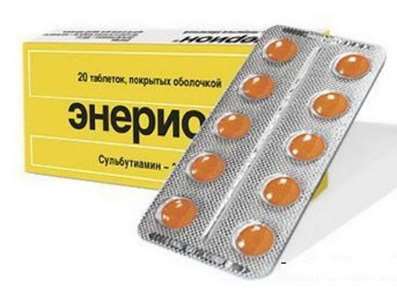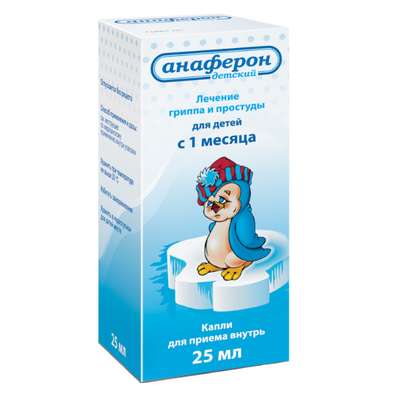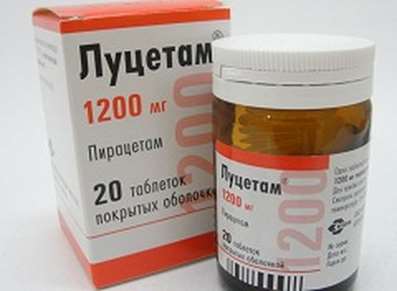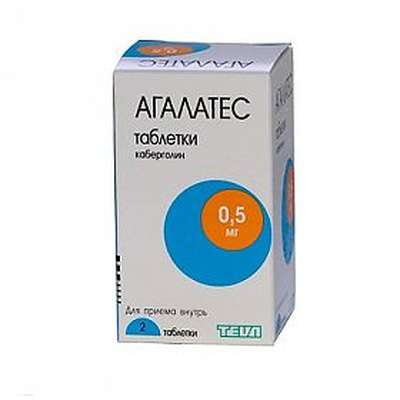Instruction for use: Ventolin
I want this, give me price
Active substance Salbutamol
ATX Code R03CC02 Salbutamol
Pharmacotherapeutic group:
Bronchodilator agent - a selective beta2-agonists [beta-adrenergic agonist]
The nosological classification (ICD-10)
J42 Chronic bronchitis, unspecified
recurrent bronchitis, Bronchitis asthma, wheeze bronchitis, chronic Bronchitis, Inflammatory airways disease, bronchi disease, Qatar smoker, Cough in inflammatory diseases of the lung and bronchus, Exacerbation of Chronic Bronchitis, Chronic bronchitis, Chronic obstructive pulmonary disease, Chronical bronchitis, Chronic bronchitis smokers, Chronic spastic bronchitis, allergic Bronchitis
J44 Other chronic obstructive pulmonary disease
Allergic bronchitis, Bronchitis asthma, Asthmatic bronchitis, wheeze bronchitis, Bronchitis is an obstructive, bronchi disease, Shortness of sputum in acute and chronic respiratory diseases, Cough in inflammatory diseases of the lung and bronchus, Reversible airflow obstruction, Reversible obstructive airway disease, Obstructive bronchitis disease, Obstructive lung disease, Obstructive bronchitis, Spastic bronchitis, Chronic lung disease, Chronic nonspecific lung diseases, Chronic obstructive pulmonary disease, Chronic obstructive bronchitis, Chronic obstructive airway disease, Chronic obstructive pulmonary disease, Restrictive lung pathology
J45 Asthma
Asthma physical effort, status asthmaticus, Bronchial asthma, Asthma lung flow, Bronchial asthma with obstruction of sputum discharge, Bronchial asthma heavy currents, Bronchial asthma physical effort, hypersecretory asthma, Hormone-dependent form of bronchial asthma, Relief of asthma attacks in bronchial asthma, Non-allergic asthma, nocturnal asthma, Exacerbation of asthma, Asthma attacks, Endogenous forms of asthma, Night asthma, Cough with bronchial asthma
J45.0 Asthma with a predominance of allergic component
Asthma bakers, Allergic lung disease, Asthma professional, Aspirin asthma, atopic asthma, Atopic bronchial asthma, Atopic asthma, Atopic asthma, Persistent atopic asthma, Allergic respiratory diseases
J45.1 Non-allergic asthma
Asthma bronchial physical stress, Asthma physical effort
J98.8.0 * Bronchospasm
Bronchospasm in bronchial asthma, Bronchospasm when exposed to an allergen, bronchospastic reactions, bronchospastic status, bronhospastichesky syndrome, Diseases accompanied by bronchospastic syndrome, reversible bronchospasm, spasmodic cough
Structure and Composition
Aerosol for inhalation dose 1 dose
active substance:
salbutamol sulphate 120.5 mg
(Equivalent to 100 mcg salbutamol)
Excipients: tetrafluoroethane - 1 dose
aerosol aluminum cylinder (complete with a dosing device); In the paper cartons 1 cylinder.
The drug forms
Aerosol for inhalation dose: aluminum inhaler equipped with a plastic dosing device with protective cap, containing a suspension of white or nearly white.
pharmachologic effect
bronchodilatory beta-agonists
pharmacodynamics
Salbutamol is a selective β2-adrenoceptor agonist. At therapeutic doses it acts on the β2-adrenergic receptors of the smooth muscle of the bronchi, providing little or no effect on β1-adrenergic receptors of myocardium. Has a pronounced bronchodilator effect of preventing or arresting bronchospasm, reduces the resistance in the airways. It increases lung capacity. Increases mucociliary clearance (in chronic bronchitis to 36%), stimulates the secretion of mucus, activates the function of the ciliated epithelium.
At the recommended therapeutic doses has no adverse effect on the cardiovascular system, does not cause increase in blood pressure. To a lesser extent, compared with the group PM has a positive chronotropic and inotropic effects. It is an extension of the coronary arteries.
It has a number of metabolic effects: reduces the concentration of potassium in the plasma affects glycogenolysis and insulin release, has a hyperglycemic (especially in patients with bronchial asthma) and lipolytic effect, increases the risk of acidosis.
Once inhaled forms action develops rapidly, the start effect - in 5 min, max - after 30-90 min (75% of the maximum effect is reached within 5 min), duration - 4.6 hours.
Pharmacokinetics
After inhalation of 10-20% salbutamol dose reaching the lower respiratory tract. The rest of the doses remain in the inhaler or is deposited in the oropharynx and then swallowed. The fraction deposited in the airways is absorbed into the pulmonary tissues and blood, but it is not metabolized in the lungs.
The degree of salbutamol binding to plasma proteins is approximately 10%.
Once in the bloodstream, salbutamol is metabolized in the liver and excreted predominantly in the urine in unchanged form or as phenol sulfate.
Swallowed part of the inhalation dose is absorbed from the gastrointestinal tract and undergoes active metabolism in the first passage through the liver, turning into the phenolic sulphate. Unchanged salbutamol and conjugate are excreted primarily in the urine.
Entered / w salbutamol has a T1 / 2 4-6 h. Kidneys displayed partially and partly as a result of metabolism to inactive 4'-O-sulphate (phenolic sulphate), which also appears mainly in urine. With the feces excreted by only a fraction of the administered dose of salbutamol. Most of the dose of salbutamol administered into the body / in, oral or inhalation, is excreted within 72 hours.
Indications
bronchial asthma:
- Relief of asthma attacks, including an exacerbation of bronchial asthma heavy currents;
- Prevention of attacks of bronchospasm associated with exposure to the allergen or exercise-induced;
- Used as a component in long-term maintenance treatment of asthma;
COPD, accompanied by reversible airway obstruction;
Chronical bronchitis.
Contraindications
Hypersensitivity to any component of the drug;
management of preterm labor;
threatened abortion;
Children under 2 years old.
Precautions: tachyarrhythmia, myocarditis, heart defects, aortic stenosis, coronary artery disease, severe chronic heart failure, hypertension, hyperthyroidism, pheochromocytoma, decompensated diabetes, glaucoma, epipripadki, renal or hepatic insufficiency, concomitant use of nonselective β-blockers, pregnancy, lactation.
Pregnancy and breast-feeding
drug for pregnant women is assigned only when the expected benefit to the patient outweighs the potential risk to the fetus.
During post-marketing surveillance revealed rare cases of various congenital malformations in children, including the formation of cleft palate and limb malformations, while taking their mothers during pregnancy, salbutamol. In some of these cases, the mother taking multiple concomitant medications during pregnancy. The causal relationship to drug intake has not been established.
Salbutamol is likely to penetrate into breast milk, so it is not recommended for nursing mothers unless the expected benefit to the patient outweighs the most potential risk to the child. No data is provided if present in breast milk salbutamol harmful effect on the newborn.
Side effects
Adverse reactions are listed according to the anatomical and physiological classification and frequency of occurrence, which is defined as follows: very common (≥1 / 10), commonly (≥1 / 100 and <1/10), occasionally (≥1 / 1000 and <1 / 100), rare (≥1 / 10,000 and <1/1000) and very rare (<1/10 000), including isolated cases.
Immune system: very rarely - hypersensitivity reactions, including angioedema, urticaria, bronchospasm, hypotension and collapse.
On the part of metabolism: rarely - hypokalemia (β2-agonist therapy may result in significant hypokalemia); very rarely - lactic acidosis. Very rare cases of lactic acidosis have been reported in patients who received salbutamol / Ventolin Nebula and in the treatment of exacerbations of asthma.
From the nervous system: often - tremor, headache; very rarely - hyperactivity.
From the CCC: often - tachycardia; sometimes - palpitations (pulsation, palpitation); rarely - increased peripheral vessels; very rarely - arrhythmias, including atrial fibrillation, supraventricular tachycardia and extrasystoles.
The respiratory system, organs, thoracic and mediastinal disorders: very rarely - paradoxical bronchospasm.
On the part of the digestive tract: sometimes - irritation of the mucous membrane of the mouth and pharynx.
From the musculoskeletal system: sometimes - muscle cramps.
Interaction
Not recommended simultaneous use of salbutamol and non-selective blockers, β-adrenergic such as propranolol.
Salbutamol is not contraindicated in patients receiving MAO inhibitors.
In patients with hyperthyroidism increases the effects of CNS stimulants and tachycardia.
Theophylline and other xanthines, while the application increases the risk of tachyarrhythmia; means for inhalation anesthesia, levodopa - severe ventricular arrhythmias.
Co-administration of anticholinergic drugs (including inhalants) can increase intraocular pressure.
Diuretics and SCS reinforce gipokaliemicheskoe effect of salbutamol.
Dosing and Administration
Inhalation. To solve the issue of increasing the dose or frequency of use of the drug can only be a doctor. It is not recommended to use the inhaler Ventolin® more than 4 times a day. The need for frequent use of maximum doses Ventolina® or a sudden increase in dose indicates a worsening of the disease.
Adults (including elderly patients)
Bronchospasm cupping: the recommended dose is 100-200 mg (1-2 inhalations).
Preventing episodes of bronchospasm associated with exposure to the allergen or exercise-induced: the recommended dose - 200 mcg (2 inhalations) for 10-15 minutes before exposure to a provoking factor.
Long-term maintenance therapy: the recommended dose - 200 mcg (2 inhalations) 4 times a day.
Children
Bronchospasm cupping: the recommended dose is 100-200 mg (1-2 inhalations).
Preventing episodes of bronchospasm associated with exposure to the allergen or exercise-induced: the recommended dose - 100-200 g (1-2 inhalation) for 10-15 minutes before exposure to a provoking factor.
Long-term maintenance therapy: the recommended dose - 200 mcg (2 inhalations) 4 times a day. Ventolin® can be administered via a spacer Bebihaler.
Instructions for use
Checking inhaler: before the first use of the inhaler, or if the inhaler is not used a week or longer, remove the cap from the mouthpiece, slightly squeezed cap laterally, good shake the inhaler and to press the valve of the aerosol for the release of one inhalation dose in the air to make sure in good inhaler.
Using inhaler
1. Remove the cap from the mouthpiece, gently squeezing the cap on the sides.
2. Inspect the mouthpiece inside and outside to make sure it was clean.
3. Shake the inhaler.
4. Hold the inhaler between finger and thumb upright upside down, with the thumb should be placed on the basis of a mouthpiece.
5. Make a slow deep breath, lips wrapped around the mouthpiece, not clenching his teeth.
6. Making the most deep breath through your mouth, simultaneously press the top of the inhaler to release one dose of inhaled salbutamol.
7. Hold your breath for a few seconds, take the mouthpiece out of his mouth, then slowly exhale.
8. For the second dose, holding the inhaler in a vertical position, wait 30 seconds and then repeat steps 3-7.
9. Firmly close the mouthpiece protective cap.
Attention! Follow steps 5, 6 and 7 - you can not rush. It should begin to breathe in as slowly as possible just before pressing the inhaler valve. In the first few times it is recommended to practice before the mirror. If you see "mist" coming from the top of the inhaler or from the corners of the mouth, it is necessary to start again from step 3.
If your doctor has given other instructions on the use of the inhaler, it is necessary to strictly observe them. You should contact your doctor if you have difficulty using an inhaler.
Cleaning the inhaler: inhaler should be cleaned at least 1 time per week.
1. Remove the metal canister from the plastic casing and remove the lid of the mouthpiece.
2. Rinse the plastic case and the mouthpiece cover under warm running water.
3. Dry the plastic case and the mouthpiece cover fully both outside and inside. Avoid overheating.
4. Put a metal canister in a plastic casing and put on the lid of the mouthpiece.
Do not immerse the metal canister into water.
Overdose
Symptoms: more frequent - hypokalemia, decreased blood pressure, tachycardia, muscle tremors, nausea, vomiting; less frequent - excitement, hyperglycemia, respiratory alkalosis, hypoxemia, headache; rare - hallucinations, seizures, tachyarrhythmias, ventricular flutter, expansion of peripheral blood vessels.
Treatment: The best antidotes are cardioselective β-blockers. However, β-adrenergic blockers should be used with caution in patients with episodes of bronchospasm in history. The use of high doses of salbutamol can cause hypokalemia, so you should monitor the level of potassium in the blood serum of a suspected overdose.
special instructions
It should instruct patients on the correct use of the inhaler Ventolin®.
Bronchodilators should not be the sole or main component of asthma therapy unstable or heavy current.
If the action of the usual dose Ventolina® becomes less effective or less long (effect of the drug should be maintained for at least 3 hours), the patient should see a doctor.
Increasing demand for the use of inhaled β2-adrenergic agonists with a short duration of action for the control of asthma symptoms indicative of an exacerbation of the disease. In such cases, you should review the patient's treatment plan. Sudden and progressive deterioration of asthma can be a threat to the patient's life, so in such cases it is necessary to urgently address the issue of the appointment or increasing doses of corticosteroids. In these patients, it is recommended to carry out daily monitoring of peak expiratory flow rate.
Salbutamol should be used with caution in patients with thyrotoxicosis.
Therapy β2-adrenoreceptor agonists, particularly when administered parenterally or by nebulizer can result in hypokalemia. Particular caution is advised to exercise in the treatment of severe asthma attacks, as in these cases, hypokalemia may be exacerbated by the simultaneous use of xanthine derivatives, corticosteroids, diuretics, and also due to hypoxia. In such situations it is necessary to control the potassium level in the blood serum.
Effects on ability to drive and / or other mechanisms. No data.
Storage conditions
In the dark place at a temperature no higher than 30 ° C (do not freeze or heat).
Keep out of the reach of children.
The shelf life
2 years.
Do not use beyond the expiration date printed on the package.
Available on prescription

 Cart
Cart





